
Two shocking blockbuster trades, with opposite results, highlighted the Canadiens 1922-23 season.
On November 3, Canadiens owner Jos Cattarinich announced to much consternation and fan outcry, that the Canadiens had traded star Newsy Lalonde's contract to the Saskatoon Crescents of the Western Canadian Hockey League for $3,000 and the right to a promising player named Aurel Joliat.
In Joliat, the Canadiens were gambling on a smallish, unproven, and often injured player. Despite the forwarning, word had it that Joliat could be every bit as fiesty as Lalonde. The fact that Joliat was but 21 years old surely helped tilt the deal in Montreal's favor.
An original Montreal Canadiens player dating back to the start of the 1909-10 season, Lalonde was said to have signed a $5,000 per season deal with the Crescents.
Lalonde's contract was guaranteed renewable dependant upon the Saskatoon team's standing after each of the first two seasons.
Lalonde, a Cornwall, Ontario native and pro hockey's first 200 goal scorer, had fallen out of favor with Canadiens management and a split seemed almost inevitable. His salary would double his previous year's earnings with Montreal.
A Saskatchewan daily said this about the Lalonde acquisition at the time:

"One of the greatest drawing cards in professional hockey today, the Flying Frenchman, as he is best known, should be able to turn out a winning team for the Crescents this winter, provided he has any kind of material, and there is small doubt but that he will. For years "Newsy" has been one of the leading goal getters in the N.H.L., and in obtaining his services the local management has turned a real trick, for, in spite of his age, the old boy has plenty of hockey spirit and brains left in him yet."
Other NHL teams were upset that they were not given a chance to acquire Lalonde, a drawing card for the league if there ever was one. The NHL had just instituted a policy where players could not be traded to the WCHL without bypassing NHL suitors, but apparently the Canadiens / Crescents transaction was finalized just prior to such an amendment.
SO, JUST WHO IS THIS AUREL JOLIAT?
For all intents, Joliat was all but a virtual unknown in Montreal, and at 5' 6", and 135 lbs, was a skeptical proposition as a hockey player in a rough and tumble era.
Joliat could consider himself fortunate to be playing any sports at all. In his teens years, he was working as a roofer one time, and plunged 25 feet, landing on the ground, back first. While he narrowly escaped serious injury, he would play his NHL career with two displaced vertebrae. While playing, he would wear a truss to keep his back from further injury.
 "The Mighty Atom" as he became known, also suffered a serious leg injury while playing football with the Ottawa Rough Riders. Joliat had been the club's kicker, until the broken leg forced him to concentrate mainly on hockey. Playing with terrible stomach ulcers for the majority of his career, Joliat was one tough little bugger.
"The Mighty Atom" as he became known, also suffered a serious leg injury while playing football with the Ottawa Rough Riders. Joliat had been the club's kicker, until the broken leg forced him to concentrate mainly on hockey. Playing with terrible stomach ulcers for the majority of his career, Joliat was one tough little bugger. However, the smallish player with the injury prone reputation, began dispelling concerns in his very first game with the Canadiens, a 7-2 loss to Toronto in which Joliat was his team's lone goal scorer.
NEWSY MADE HIS BED
The seeds for Newsy Lalonde's exit were sewn during a very troubling 1921-22 campaign, his most miserable as a pro player. Over the years, there was a lot of water passed under the bridge between the playing coach and team management, and things were especially worse that season, when he first sat out in a contract dispute, before being fined for indifferent play by owner Leo Dandurand.
A separate occurance two seasons prior that had not been forgotten was a game in which Lalonde seemed to deliberately score on a flabbergasted George Vezina. Claiming he felt the play had been blown dead, Newsy fired a puck passed his own goalie before all hell broke loose. As team mates admonished the gesture, Lalonde tore after the game's official to no avail. Certain opinions felt than Lalonde may have been trying to prove a point, especially when he returned to ice as though a hell hound were at his heels. Newsy's goathorns were removed when he netted the eventual game winner in overtime.

Lalonde's relationship with management and team mates had always been an arduous and laborious one. Newsy enjoyed his celebrity status as the Canadiens premier player since it's inception and was never afraid to speak his mind out. The original Flying Frenchman enjoyed the income from two concurrent professional sports, hockey and lacrosse, and was never in tough for cash during the tightest of times of the Depression era. This however, never prevented him from fighting over a hard earned dollar, espescially when he was well informed as to how the owners pocket were being lined by his efforts and talent.
The Canadiens often tolerated Newsy's behavior and antics, simply because he battled as hard on the ice as he had off it. When the twilight of his career seemed at dawn, the Canadiens did not hesitate to cash in on it, and dispatch him from the league.
Lalonde would be rejuvenated with the Crescents in 1922-23, scoring 30 goals in 29 games. It would mark his sixth professional scoring title across six different pro leagues. The following season ( see photo ) Newsy would be joined on the Crescents by current Canadiens defender Louis Berlinguette and goaltender for montreal, George Hainsworth.

After four seasons in Saskatoon, he would return to the NHL's New York Americans as their coach in 1926, making his final NHL appearance. He would return to the Canadiens one last time as a coach in the 1930's.
MALONE RETURNS, LEAVES SCORING PUNCH BEHIND
The second most controversial move of the season was the Hamilton Tigers trading away of star forward Joe Malone to the Canadiens in exchange for Bert Corbeau and Edmond Bouchard. Malone had scored 28 and 24 goals in his two seasons in Hamilton, but the controversy quickly quieted as Malone would only go on to score 1 goal in 20 games with the Habs in 1922-23, while Bouchard, with Hamilton, led the league with 12 assists.
 After having been suspended by Hamilton for refusing to report to training camp on December 6, the Canadiens reacquired Malone, but at the age of 33 his skills had now vanished as he struggled with illnesses and injury.
After having been suspended by Hamilton for refusing to report to training camp on December 6, the Canadiens reacquired Malone, but at the age of 33 his skills had now vanished as he struggled with illnesses and injury.If the Malone deal was disappointing, the acquisition of Joliat was anything but. The rookie chipped in with 12 goals and 9 assists in 24 games, and the best seemed like it was yet to come.
One important player gone from 1922 was defenseman Corbeau. The veteran of eight seasons in Montreal wished to be closer to his family, and asked Dandurand for a trade to Hamilton. He was included in Malone acquisition from the Tigers, and was traded a season later to the St. Patricks where he would wind down his NHL career.
Starting the season, the team held its training camp in Grimsby, at the west end of Lake Ontario. Players and team management enjoyed the experience, as did the locals, who not only gave the Canadiens a municipal welcome, but invited the team back for more such occasions.
DIDIER'S LAST HURRAH
It would be the final camp for the longest standing original Montreal Canadien, Didier Pitre, who was the first ever player signed by the club. Now 39 years old and wearing down fast, the right winger / defenseman was at the end of an illustrious career that would see him score 220 goals in a Montreal uniform, second only to Newsy Lalonde's 266.
Born on September 1, 1883, Pitre also has the distinction of being the second oldest forward to suit up for the Canadiens, after Jean Beliveau, who was born one calandar day earlier, 47 years after Pitre in 1931. The distiction of the eldest of Habs to ever suit up in teams colours, would go to a goaltender the club would reacquire in the years to come.

The burly Pitre had held his own battles over the seasons, a few with management, more than a few with Newsy, and a scattered issues with the media of the day.
As the Canadiens first ever signed player, he entered the NHA in controversy, with signed contracts from two rivals leagues in hand. He often warred with Lalonde for status on the club, in regards to contracts. In many seasons in which he outscored the fiesty Newsy, he never seemed to gain the upper hand financially.
Pitre, often was of an easy going nature, despite the flare ups. He was once criticized by his coach for apologetically helping an opponant up after he had knocked him to the ice.
His most troubling season came when the Canadiens had traded him to Vancouver in lieu of Lalonde snubbing the PCHL contract he had signed. During that time, an article emminating from Ottawa, had portrayed the big Canadiens winger's lifestyle as being less than exempliary. As Pitre filed suit against the paper, the Canadiens attempted to clean their hands of both troubles at once.
A popular player with the local fans, Pitre would add a mere goal and an assist in 23 games, in his final campaign with the club
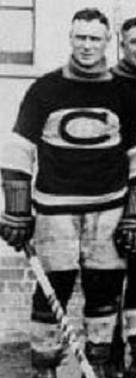 With Lalonde gone, the Canadiens management offered the team captaincy to goalie Georges Vezina, who declined the honour because he felt his position was ill suited for the duty. The "C" then ended up on the sweater of Sprague Cleghorn.
With Lalonde gone, the Canadiens management offered the team captaincy to goalie Georges Vezina, who declined the honour because he felt his position was ill suited for the duty. The "C" then ended up on the sweater of Sprague Cleghorn.SHAKY CANADIENS PULL IT TOGETHER
The Canadiens employed only 10 skaters and a goalie in 1922-23, with Joliat and Malone being the lone new faces. The slack left by Lalonde's departure was picked up by Joliat and Billy Boucher, but the Canadiens were an inconsistant team for the majority of their 24 games.
After nine games, Montreal had but three wins and a pair of ties for their earning. They would win six of their next eight games, beating every club twice in that span, before dropping a pair to Hamilton and Ottawa.
With five games remaining, the Canadiens needed to win all five to have a shot at the O' Brien Cup, a first place standing, and the Stanley Cup. It started well with a 5-3 win at the Mount Royal against the Tigers, but the Canadiens let the St. Patricks snuggle up to them in the standing with a 4-3 loss to Toronto.
 The standings were incredible tight, and all of Montreal, Ottawa, and Toronto were still aspirants to top spot. The Canadiens went on to defeat each of the three remaining foes, but didn't get any help from Hamilton as they lost a pair to Ottawa.
The standings were incredible tight, and all of Montreal, Ottawa, and Toronto were still aspirants to top spot. The Canadiens went on to defeat each of the three remaining foes, but didn't get any help from Hamilton as they lost a pair to Ottawa.Final wins for the Canadiens against Toronto and Ottawa helped clinch second place, and happily, a playoff berth. They finishing one point back of the Senators, and one point up on the St. Pats. The Tigers remained the league doormats for a third consecutive season.
In the final tally, the Canadiens managed one more win than it had the season before, but the playoffs held promise as Montreal ended on a three game winning note, while the Senators lost their final two games as they held onto first place.
CLEGHORN GOES BALLISTIC ON OTTAWA
While the era of NHL hockey's earliest years is infamous for its rough and often violent action, Cleghorn stands above every evil doer as the most notorious perpetrator of dirty deeds. It was by no accident that he led the league in penalty minutes for nine of his first ten seasons.
In the first game of this season's playoffs, the always vigilant Cleghorn still had bones to pick with the Senators, and he literally went ballistic at the site of their barber shop pole sweaters.
First, Cleghron unleashed his wrath upon Ottawa's Lionel Hitchman, butt ending him in the face with his lumber. After being penalized, he went on even further, and attempted to carve his initials into Cy Denneny's facial features. As Denneny backed off, team mate Billy Coutu joined in the brawl, and clunked the Senator a two hander over the head. As Ottawa players were hauled off on stretchers, Cleghorn himself would be hauled off to an Ottawa police station after the incident and charged with aggravated assault and fined $50.

 Montreal manager and coach Leo Dandurand, who despised such acts and felt that violence had no part in the game, was given little choice but to suspend both Cleghorn and Coutu for their actions. Each paid a $200 fine. Dandurand felt so strongly about his personal stand, that neither player suited up for the second game of the playoff series.
Montreal manager and coach Leo Dandurand, who despised such acts and felt that violence had no part in the game, was given little choice but to suspend both Cleghorn and Coutu for their actions. Each paid a $200 fine. Dandurand felt so strongly about his personal stand, that neither player suited up for the second game of the playoff series.Ottawa won the bloodied contest by a 2-0 score, and Cleghorn's absense in game two, may or may not have cost the Canadiens a trip to the Stanley Cup finals. Needing a two goal win, the more disciplined Canadiens team could only manage the slightest of 2-1 victories.
The Senators would win the two game total goals series 3-2, but the round will long be remembered by the Cleghorn maiming of Ottawa players.
SENATORS REIGN SUPREME ONCE MORE
This would the second season in which the Stanley Cup playoffs would involve competition from three different leagues. The previous saw all three second place teams win their respective leagues, and now it would be the turn for all first place clubs.
The Pacific Coast Hockey Association abandoned its seven man hockey in favour of the six man rule used in the NHL and the Western Canada Hockey League. This allowed the PCHA and the WCHL to play interleague games while the separate leagues kept their own standings. The newly renamed Vancouver Maroons won the PCHA championship and the Edmonton Eksimos won the WCHL championship.
The Senators first faced the Maroons, and won the best of five, three games to two. They went on to sweep the Eskimos 2-0 in a best of three. In one game against Vancouver, the Senators King Clancy played all five positions, in cluding goal in one game. Unbeknowst to league president Frank Calder, the Stanley Cup then spent the entire season in the Clancy household before it was returned.

STARS ON THE HORIZON
As Ottawa claimed its third Stanley Cup win in four seasons, the Canadiens again could feel that they were not far off the mark - and truly they would not be wrong.
Additions in recent seasons, Joliat in this year, Billy Boucher, and the Cleghorn brothers, changed the face of the Canadiens quite rapidly. It is an old saying that team's were often one player away from the Cup, and in this instance, nothing could prove to be more true.
As the prospects for a solid career from Joliat looked good, a compatriot of sorts, who would more than compliment his talents, was on the horizon. Few knew at the time, that soon to be in a the Canadiens midst, would be a player who would become the game's most blazing talent over the two decades.




.










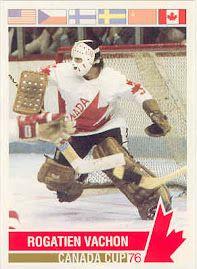
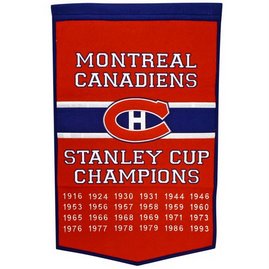







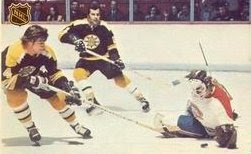



















































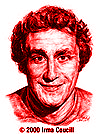



































































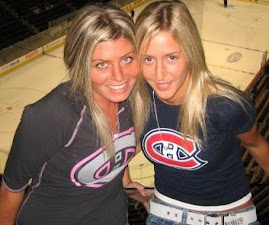


















No comments:
Post a Comment